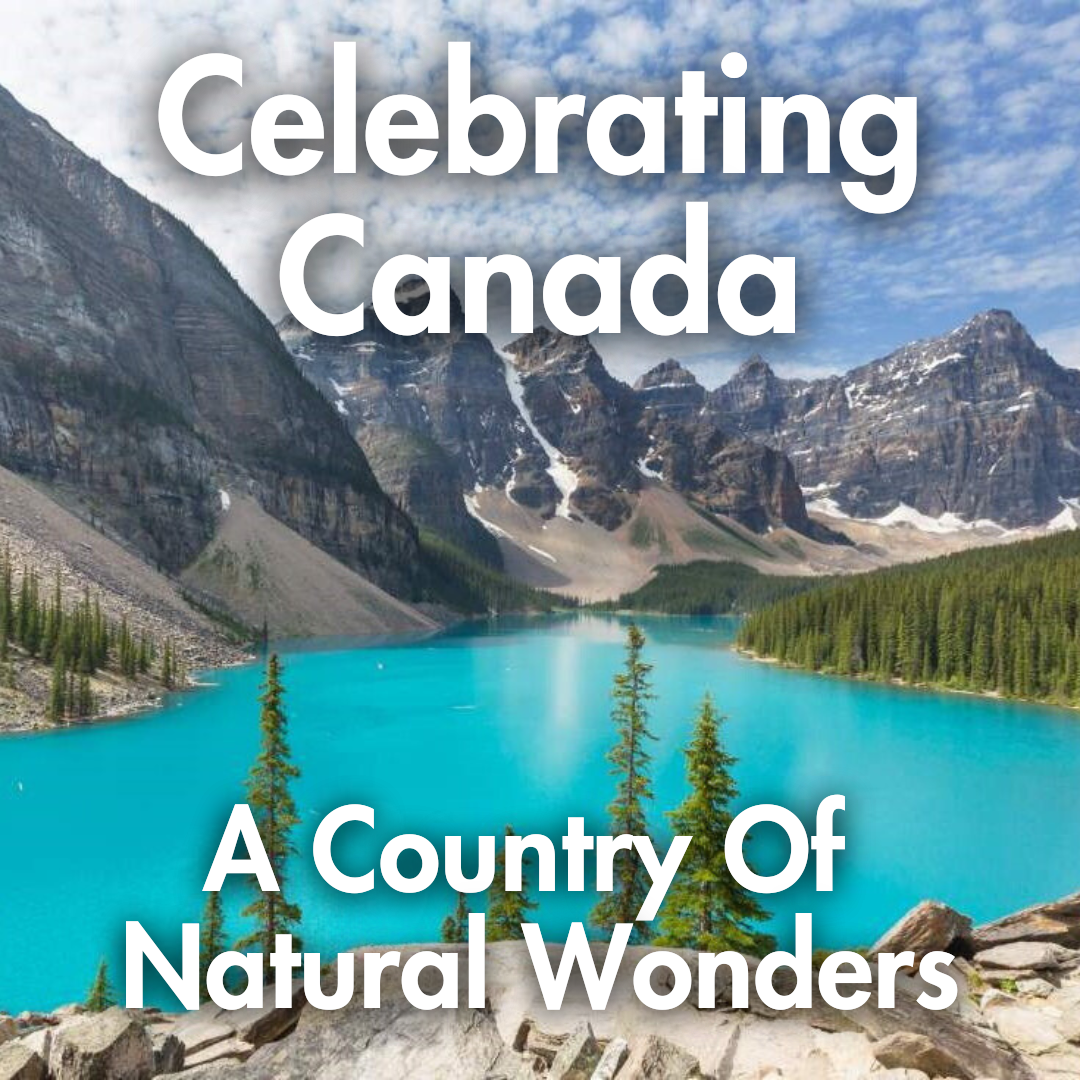.png?lang=en-CA)
As Canada Day passes each year, maple leaf flags flutter proudly, the sky fills with fireworks, and friends and family gather to appreciate all of the amazing things that our country has to offer.
Beyond its rich history and diverse culture, Canada boasts some of the most breathtaking natural landscapes in the world. From incredible waterfalls to serene lakes, majestic mountains to stunning coastlines, Canada's natural beauty remains unmatched. Explore some of the country's most iconic natural wonders and national parks with us, each offering a look into the awe-inspiring beauty of the Great White North.
1. Niagara Falls, Ontario: Captivating Cascades
Niagara Falls is one of the most famous natural landmarks in the world, let alone in Canada. Straddling the border between Canada and the United States, Niagara Falls is fed by the Great Lakes and churns 7,500 bathtubs worth of water over its edge every second, making it the world’s second largest waterfall by volume. Comprising of three waterfalls — Horseshoe Falls, American Falls, and Bridal Veil Falls — Niagara Falls is a powerful and awe-inspiring sight.
Experience the falls up close on a Maid Of The Mist boat tour, taking you right up to the Falls where you can feel the constant mist and hear the water roar. The Journey Behind the Falls offers a unique perspective by tunnel to observation decks situated right behind the cascading waters. Its expansive size, powerful flow, and deafening roar makes Niagara Falls a must-see natural wonder.

2. Banff National Park, Alberta: Jewel of the Rockies
Banff National Park, Canada's oldest and most iconic national park, is a stunning natural expanse in Alberta. Nestled in the heart of the Rocky Mountains, Banff is a haven for outdoor enthusiasts and nature lovers, with glacial mountain peaks visible in every direction, pristine alpine lakes, and unparalleled wilderness treks and views.
Lake Louise, often called the “Jewel of the Rockies” with its vibrant turquoise waters, is surrounded by towering peaks and an epic backdrop of Victoria Glacier. Guided hikes and horseback trips lead you up the iconic path to the Plain of the Six Glaciers, where an alpine tea house overlooking the lake has stood since 1924 when it was built by Swiss mountaineering guides.
Banff is world renowned for its natural beauty. In winter, Banff transforms into a frozen wonderland, perfect for skiing, ice skating and snowshoeing. Banff is also home to multiple natural hot springs, making it a perfect destination for a blend of adventure and relaxation.
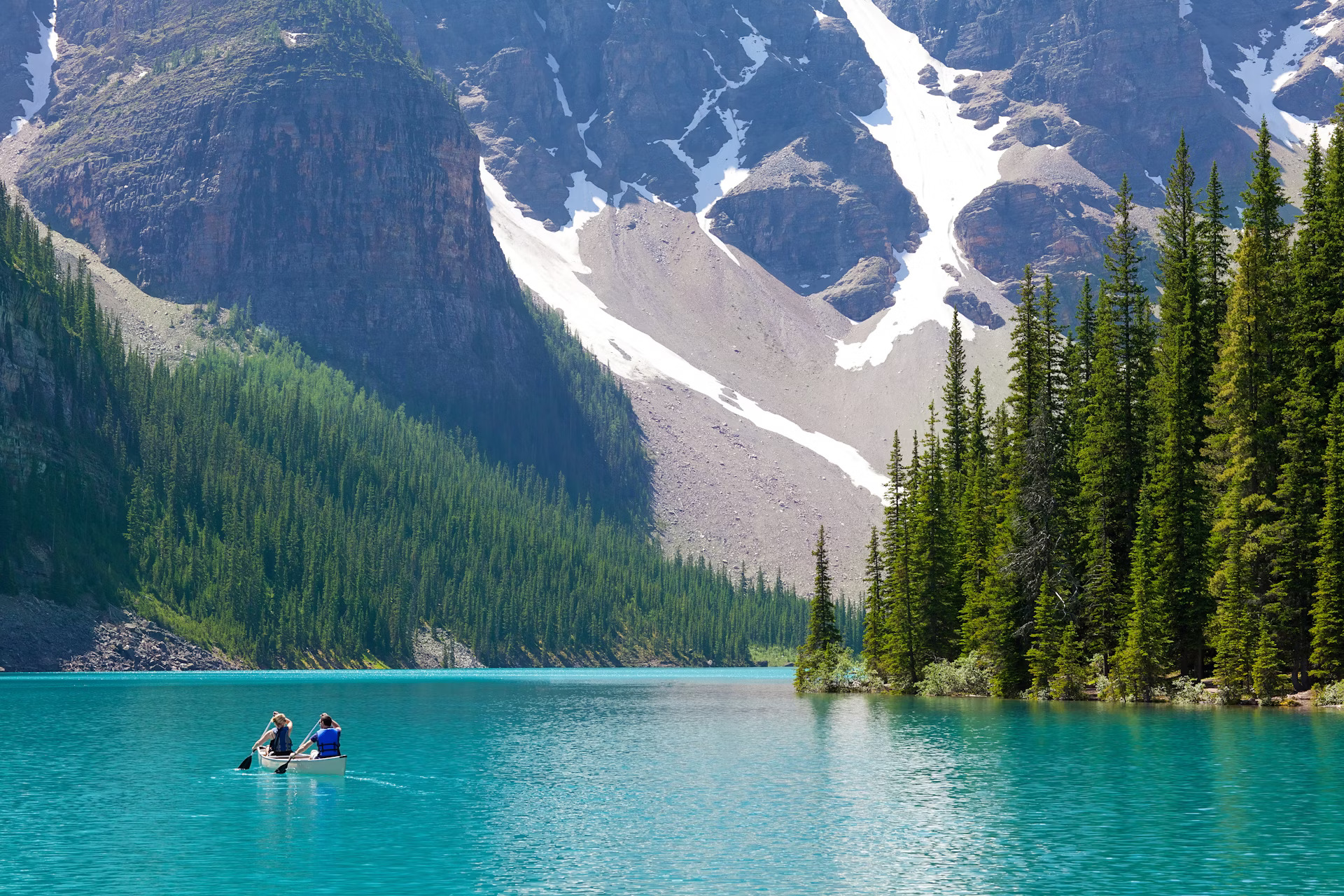
3. Moraine Lake, Alberta: A Glacial Gem
Moraine Lake, located in Banff National Park's Valley of the Ten Peaks, is one of Canada's iconic natural wonders, and the view many initially turn to when thinking of Canada’s beauty. The lake's striking turquoise colour is unparalleled, due to the refraction of light off the fine particles of glacial rock deposited in the water by mountain runoff.
Moraine Lake’s rugged and remote location within Banff only adds to its allure, being surrounded by mountains, waterfalls, canyons, dense forests, and rock piles. The tranquil waters and breathtaking scenery make Moraine Lake a must-visit destination for nature lovers, hiking enthusiasts, and photographers.
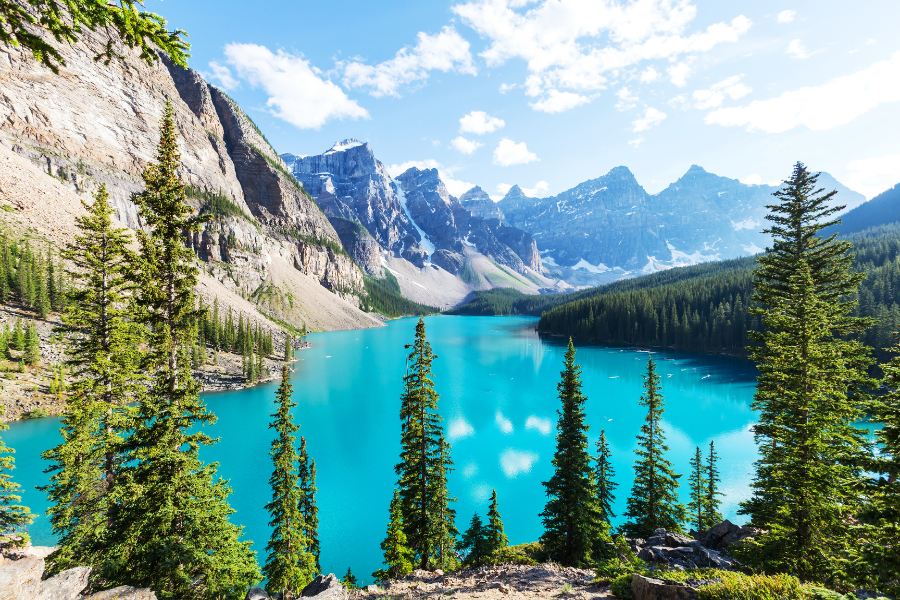.png?lang=en-CA)
4. Jasper National Park, British Columbia: Wilderness At Its Best
Adjacent to Banff, Jasper National Park is the largest national park in the Canadian Rockies, spanning over 11,000 square kilometres. Jasper is renowned for its vast, untamed wilderness and abundant wildlife, including elk, moose, bears, and wolves. The park’s diverse landscapes range from alpine mountains and meadows to dense forests to glacial lakes.
One of Jasper's most remarkable wonders is the Columbia Icefield, one of the largest icefields in North America. Take a guided tour onto the Athabasca Glacier or explore the Icefields Parkway, a scenic drive that offers breathtaking views of glaciers, waterfalls, and rugged mountain peaks. Jasper is also a designated Dark Sky Preserve, making it the perfect remote setting for stargazing and experiencing the northern lights.
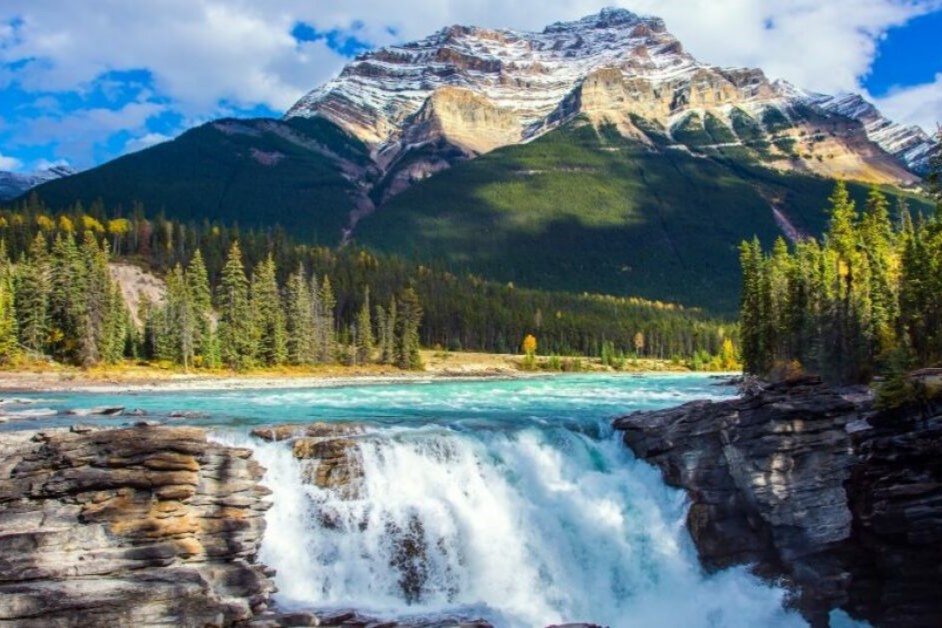
5. Canadian Badlands, Alberta: Otherworldly Landscapes
The Canadian Badlands, located primarily in southeastern Alberta, offer a stark and surreal contrast to the lush forests and mountains of other parts of Canada. This region offers an otherworldly landscape, characterized by its dramatic hoodoos, canyons, and unique rock formations shaped by centuries of erosion.
Dinosaur Provincial Park, a UNESCO World Heritage Site within the Badlands, is one of the richest dinosaur fossil locations in the world, with some fossils found estimated to be between 75-77 million years old. Explore the park's stunning landscapes and participate in a guided fossil tour to learn about the prehistoric creatures that once ruled this area. The Badlands' rugged beauty and rich paleontological history make it a fascinating destination for nature and history enthusiasts alike.
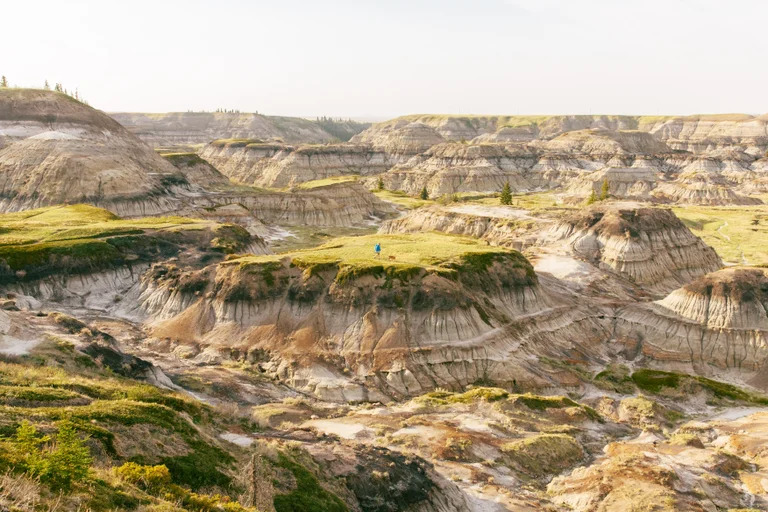
6. Aurora Borealis, Manitoba: Nature's Light Show
Manitoba, particularly the area around Churchill, is one of the best places in the world to witness the vivid Aurora Borealis, or Northern Lights. This natural light display, caused by the interaction of solar wind with the Earth's magnetic field, paints the night sky with a dancing and shimmering kaleidoscope of vibrant and flickering greens, yellows, pinks, and blues.
Aurora Borealis is visible in Churchill an incredible 300 nights per year, however between November and March is the prime season for viewing the Northern Lights, with clear, dark skies providing optimal conditions.
Wildlife viewing and dog sledding are popular activities in Churchill beyond its amazing natural light show, and the town in the fall is also known as the “Polar Bear Capital of the World”.
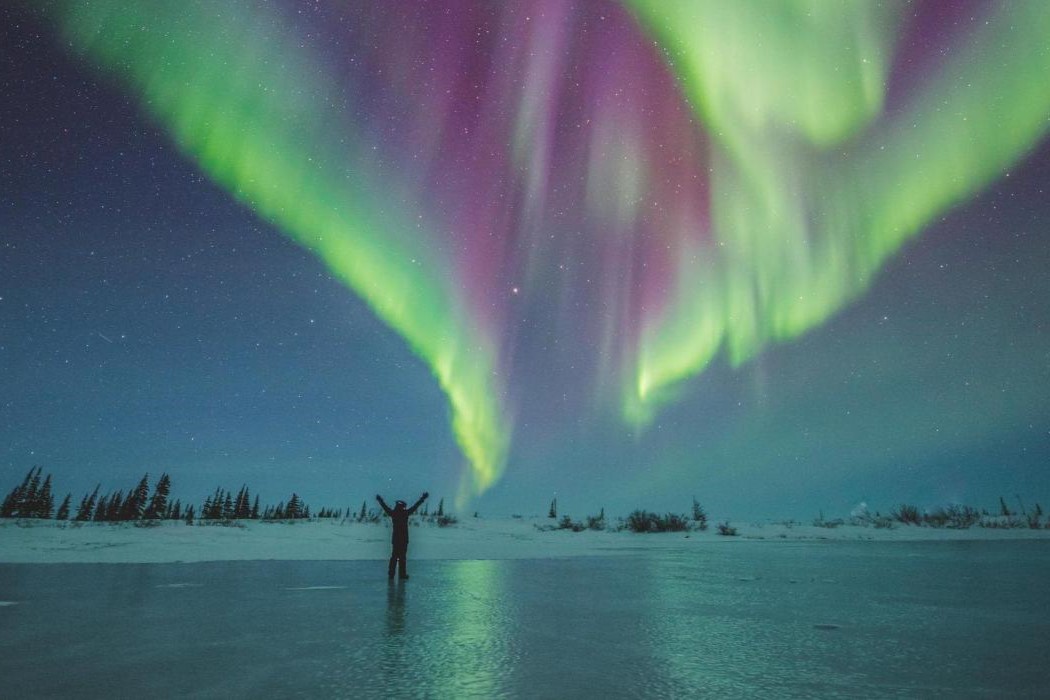
7. Bay of Fundy, New Brunswick: Home of the Highest Tides
On the eastern coast of Canada in New Brunswick lies the Bay of Fundy, famed for being home to the highest tides in the world, reaching up to 16 metres tall. The Bay offers incredible, changing coastal views, where it experiences two high tides and two low tides within a 24-hour period, with the average time between tides being six hours. These dramatic tidal changes create a dynamic environment that supports a rich diversity of marine life and coastal ecosystems.
Explore the Bay of Fundy’s rugged coastline, dotted with sea caves and towering cliffs, and witness the tidal phenomenon at Hopewell Rocks, where massive rocks have stood against the changing, battering tides. These rocks are sandstone erosion formations, also known as “flowerpots,” rising from the ocean floor. They have formed a variety of shapes, resembling giant arches, stone mushrooms and animals visible from the coastline.
The Bay is also a prime location for whale watching, with many opportunities to spot humpback and fin whales.
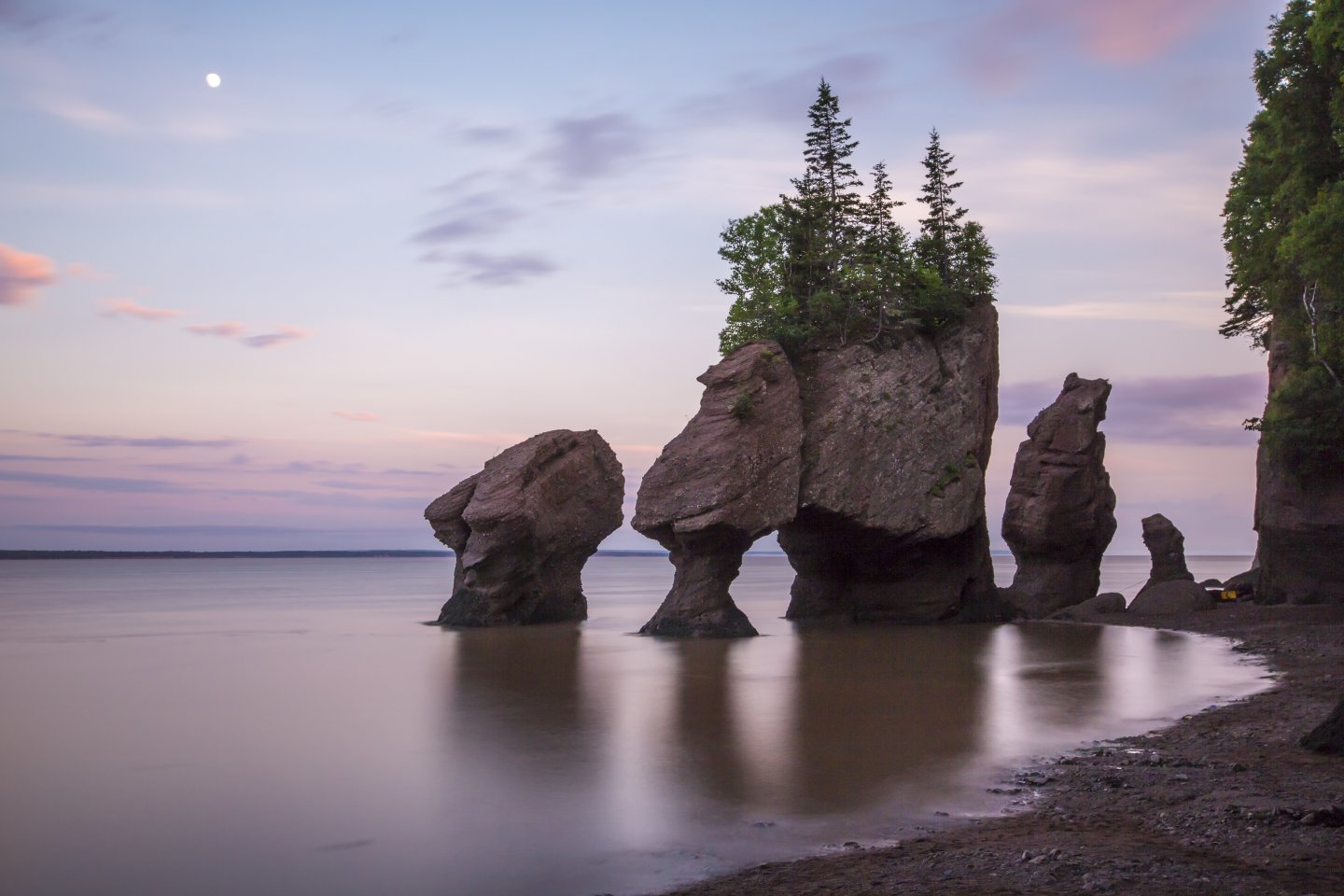
8. The Cabot Trail, Nova Scotia: Scenic Splendour
The Cabot Trail, winding through Cape Breton Island in Nova Scotia, is one of the world's most scenic drives. This 298-kilometre loop takes travellers on a stunning journey through changing landscapes, from rugged coastal cliffs and dense forests to charming fishing villages and rolling highlands.
Along the trail, Cape Breton Highlands National Park offers numerous hiking opportunities, including the famous Skyline Trail, which provides breathtaking views of the Gulf of St. Lawrence. The Cabot Trail is especially vibrant in autumn when the changing leaves transform the scenery to golden and orange hues, making it a perfect time to experience the natural beauty of Nova Scotia.
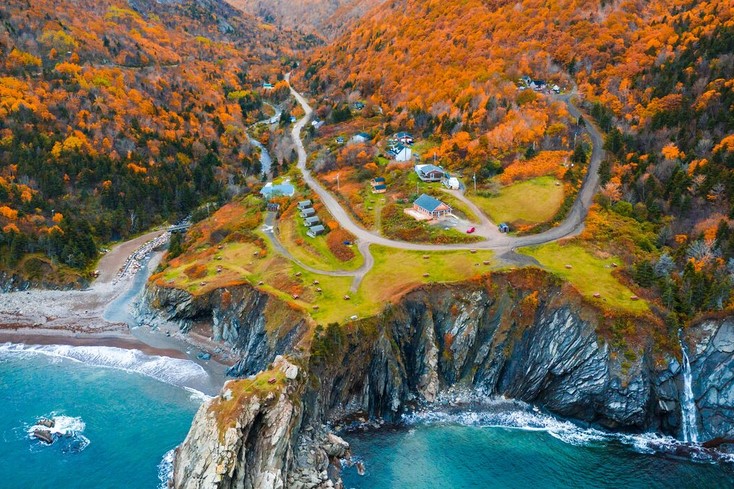
9. Gros Morne National Park, Newfoundland: A Geological Marvel
Located on the west coast of Newfoundland, Gros Morne National Park is a UNESCO World Heritage Site celebrated for its geological significance and striking beauty. The park's name, which means "big lone mountain," is derived from Gros Morne Mountain, its main peak offering panoramic views of the surrounding landscape. The flat-topped mountain is unique in that it is an alpine tundra climate, far south to where this tundra is usually found.
Gros Morne's unique geology includes the Tablelands, an area of exposed mantle rock that provides a rare glimpse into the Earth's interior. The park's fjords, carved by glaciers, create dramatic cliffs above serene waters, perfect for boat tours, canoeing, and kayaking. Its hiking trails lead through lush forests, coastal lowlands, alpine plateaus, and across sharp ridges, each offering different perspectives of this extraordinary, expansive national park.
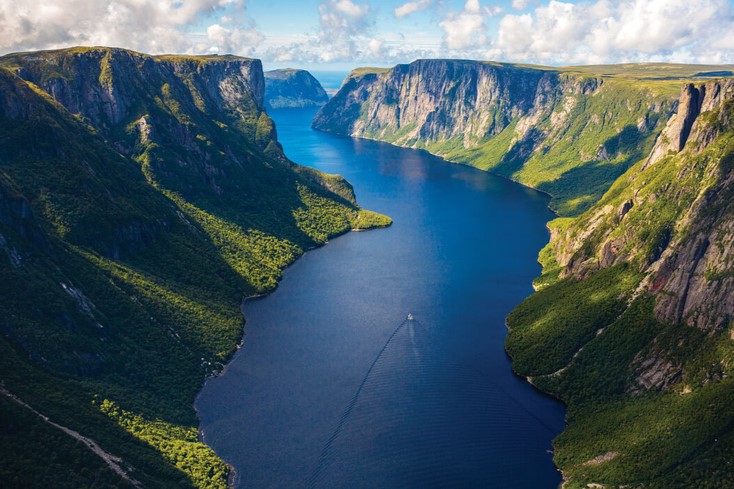
10. The Northwest Passage, Arctic Circle: Nature’s Icy Realm
The Northwest Passage, a sea route 1450 kilometres long connecting the Atlantic and Pacific Oceans through the Arctic Archipelago, is both a historic and natural wonder. This remote and icy realm, once sought after by explorers, is now accessible to adventurers seeking to experience the Arctic's stark, rural beauty and diverse wildlife.
Expedition cruises offer a chance to navigate these waters, where you can experience scenic fjords and inlets, majestic icebergs, glaciers, and ice caves, and incredible Arctic wildlife, including polar bears, walruses, and migratory birds. The passage's significance in maritime history and its pristine natural environment make it a truly unique Canadian wonder.
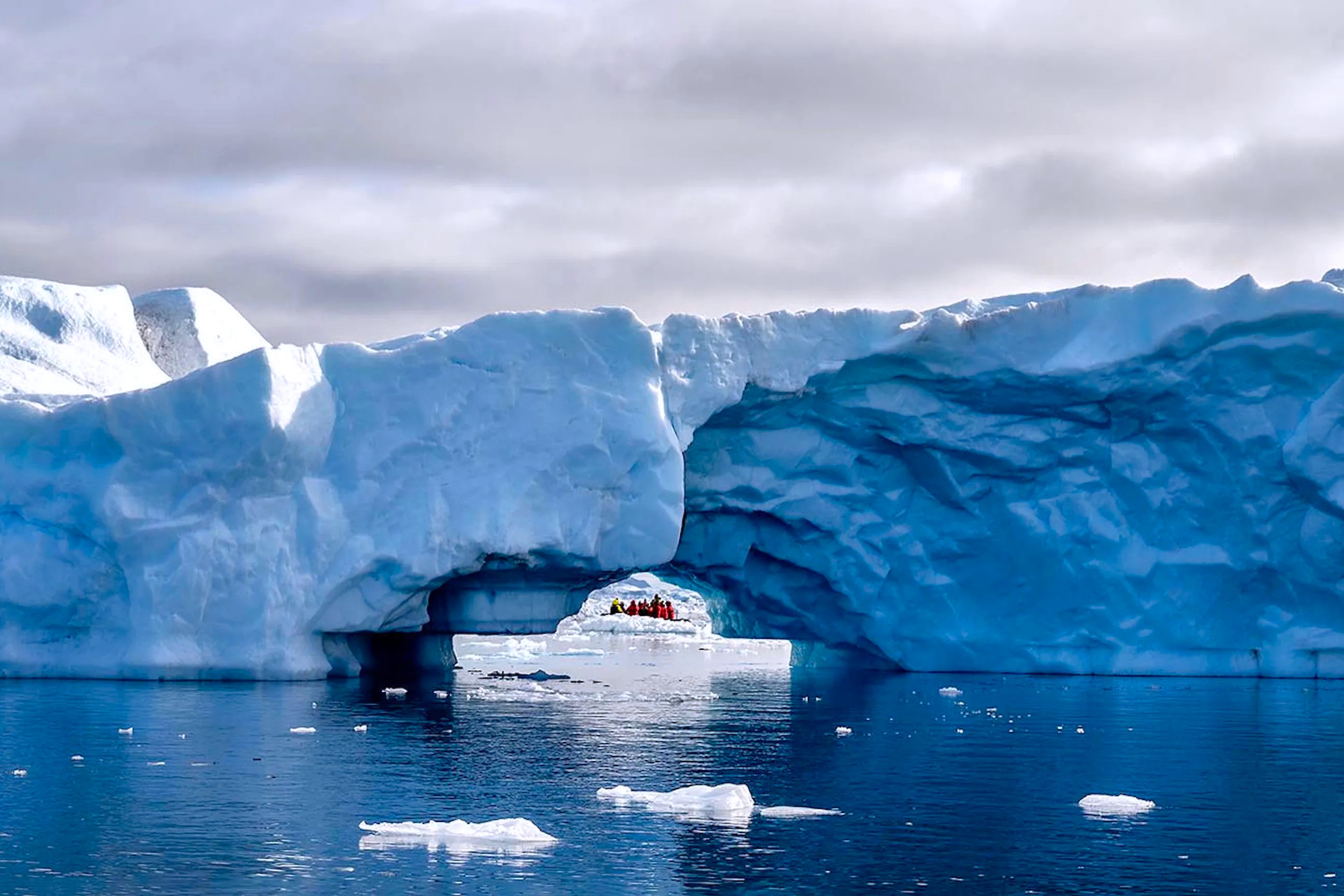-copy.jpg?lang=en-CA)
Celebrating Canada
Canada's natural wonders and national parks are a testament to our country's vast and diverse landscapes and beauty. Each wonder offers a unique experience of nature in Canada, from the glacial peaks of Banff and Jasper, to the coastal environment of the Bay of Fundy, to the geological marvels of Newfoundland. As we celebrate Canada, let us take a moment to appreciate these natural treasures that contribute in making our country so special.
At Heart to Home Meals, we are Proudly Canadian. From the ingredients we use to the communities we serve, everything we do reflects our commitment to quality, local businesses, and the values that make Canada great! Read more about our Canadian values here.
.png?lang=en-CA)


